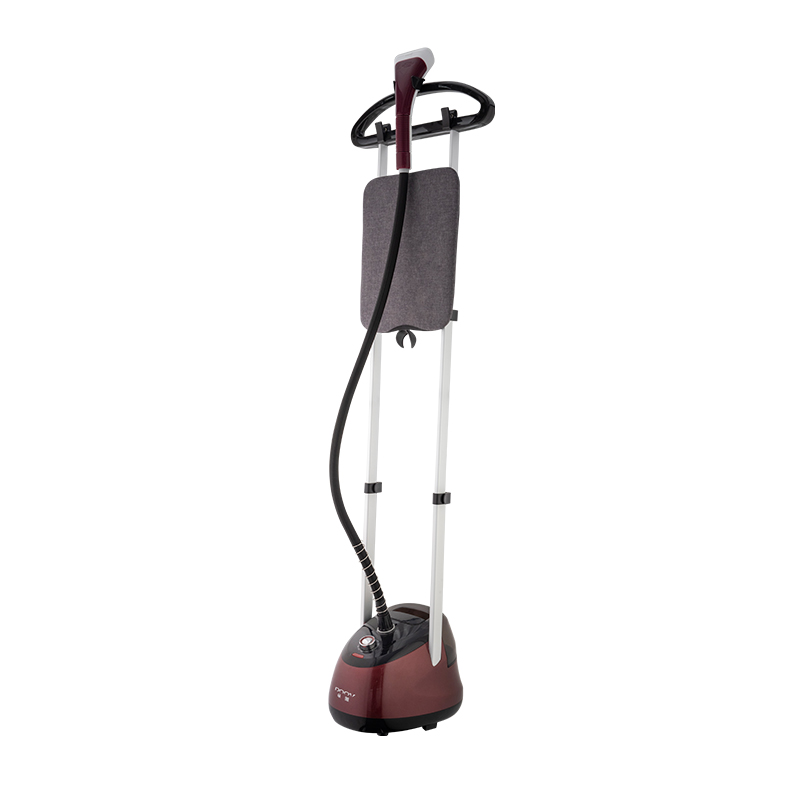 English
English Español
Español  Português
Português  русский
русский  Français
Français  日本語
日本語  Deutsch
Deutsch  tiếng Việt
tiếng Việt  Italiano
Italiano  Nederlands
Nederlands  ภาษาไทย
ภาษาไทย  Polski
Polski  한국어
한국어  Svenska
Svenska  magyar
magyar  Malay
Malay  বাংলা ভাষার
বাংলা ভাষার  Dansk
Dansk  Suomi
Suomi  हिन्दी
हिन्दी  Pilipino
Pilipino  Türkçe
Türkçe  Gaeilge
Gaeilge  العربية
العربية  Indonesia
Indonesia  Norsk
Norsk  تمل
تمل  český
český  ελληνικά
ελληνικά  український
український  Javanese
Javanese  فارسی
فارسی  தமிழ்
தமிழ்  తెలుగు
తెలుగు  नेपाली
नेपाली  Burmese
Burmese  български
български  ລາວ
ລາວ  Latine
Latine  Қазақша
Қазақша  Euskal
Euskal  Azərbaycan
Azərbaycan  Slovenský jazyk
Slovenský jazyk  Македонски
Македонски  Lietuvos
Lietuvos  Eesti Keel
Eesti Keel  Română
Română  Slovenski
Slovenski  मराठी
मराठी  Srpski језик
Srpski језик
Can a household steamer be used as a disinfectant to kill germs and bacteria?
2024-10-14

Can household steamers kill germs and bacteria?
Yes, household steamers can effectively kill germs and bacteria by subjecting them to high-temperature steam. According to research, high-temperature steam above 212°F (100°C) can kill most bacteria and viruses. When the steam comes into contact with a surface, it rapidly heats up the surface and destroys any bacteria present. Steam cleaning is especially useful for eliminating mold, dust mites, and other allergens that can trigger allergic reactions.What surfaces can a household steamer be used on?
A household steamer can be used on a variety of surfaces, including kitchen countertops, bathroom tiles, windows, mirrors, carpets, curtains, and upholstery. Some steamers also come with specialized attachments that allow you to clean grout, crevices, and tight spaces. However, it is important to follow the manufacturer's instructions to determine which surfaces can be safely steamed.How does steam cleaning compare to traditional cleaning methods?
Steam cleaning is a more eco-friendly and chemical-free alternative to traditional cleaning methods that rely on harsh chemicals. It is also more effective at eliminating germs and bacteria because it heats up surfaces to a high temperature, which kills pathogens. In addition, steam cleaning can be used to sanitize and refresh fabrics, carpets, and upholstery, eliminating the need for expensive professional cleaning services.What are some safety precautions to take when using a household steamer?
When using a household steamer, it is important to follow the safety precautions outlined by the manufacturer. Some tips to keep in mind include wearing protective gloves and goggles to prevent burns, keeping the steam nozzle away from the body, and allowing the steamer to cool down before refilling the water tank. It is also important to keep children and pets away from the steamer and to store it in a safe place when not in use.Conclusion
In conclusion, a household steamer is a versatile and effective tool for cleaning and disinfecting your home. It is eco-friendly, chemical-free, and can be used on a variety of surfaces. Steam cleaning has been proven to be an effective method for killing germs and bacteria and can help keep your family safe from harmful pathogens. Cixi Meiyu Electric Appliance Co., Ltd. is a leading manufacturer of high-quality household steamers. We are committed to providing our customers with safe, effective, and affordable cleaning solutions. Visit our website at https://www.my-garmentsteamer.com to learn more about our products and services. For inquiries, please contact micheal@china-meiyu.com.10 Scientific Papers on Household Steamers
1. Nasr, M. (2016). Evaluation of the effectiveness of steam-cleaned carpets in reducing allergens in homes. Journal of Environmental Health Science & Engineering, 14(1), 14.
2. Pongrácz, E., Székács, A., & Langó, J. (2018). Effectiveness of different cleaning strategies in reducing Salmonella Typhimurium on contaminated surfaces and in biofilms. Food Science & Nutrition, 6(6), 1460-1466.
3. Simonovska, B., & Sivrevska, M. (2014). The Effect of Steam on the Removal of Dust Mites from High-Temperature Resistant Fabrics. Journal of Young Scientists, 2(2), 738-742.
4. Yoo, J. B., Kim, H. G., & Kim, S. R. (2013). Inactivation of the human influenza A virus by high-temperature steam treatment. American journal of infection control, 41(6), e55-e57.
5. Li, X., Xu, P., Shen, J., Xia, F., & Liu, J. Z. (2019). Reusing overhead reclaimed wastewater for household steam cleaning: A pilot-scale study on microbial safety and cleaning effects. Journal of Hazardous Materials, 366, 293-300.
6. Porteous, P., & Wyborney, V. (2017). Efficacy of steam cleaning for killing Helicobacter pylori in a domestic kitchen. Journal of Infection Prevention, 18(2_suppl), S20-S25.
7. Cui, X., Chen, Q., & Dong, X. (2016). Evaluation of high-temperature steam treatment for the inactivation of Escherichia coli O157: H7, Salmonella Typhimurium and Listeria monocytogenes on alfalfa seeds. Journal of Applied Microbiology, 120(1), 51-59.
8. Castro, J., Vera, R., & Sabater, C. (2018). Effectiveness of steam cleaning with a portable steam cleaner on reducing Staphylococcus aureus biofilms on hard surfaces. Journal of Cleaner Production, 172, 3471-3476.
9. Huang, Y., & Wan, C. (2014). Study on the sterilization effect of high-temperature and high-pressure steam cleaning on Staphylococcus aureus. International Journal of Applied Science & Technology, 4(6), 150-155.
10. Niemira, B. A., & Colditz, I. G. (2017). Inactivation of Salmonella on pecans and their impact on product quality using steam pasteurization treatments. Journal of Food Safety, 37(4), e12340.
-
E-mail
-
Call Us
-
Address
No. 698, Yu'an Road, Zhouxiang Town, Cixi City
If you are interested in our products, like garment steamer, vertical garment steamer, handy garment steamer, you can consult us by email, and we will reply you within 24 hours.




